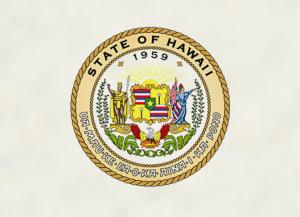Hawaii Approves New Rooftop Solar, Energy Storage Programs

Citing the difficulty faced by the state’s electric grid in accommodating more and more excess output from self-generation systems, the Hawaii Public Utilities Commission has introduced two new distributed energy resource (DER) programs that are designed to better balance growing consumer interest in DER technology with utility need for additional capacity. The first new plan is referred to as the Smart Export program while the second is known as the Controllable Customer Grid Supply program. Both extend additional net metering rate and service options to small customers who choose to invest in rooftop solar and battery energy storage systems.
In the same order, the commission clarified terms of existing net energy metering (NEM) programs so as to offer greater clarity to customers who have already invested in a rooftop solar photovoltaic (PV) system.
The commission said that given the substantial and growing amounts of DER in Hawaii, the public interest is not served by a DER market structure that exclusively facilitates the uncontrolled export of electrical energy onto the grid, irrespective of whether the power system can physically accommodate such exports or whether such market structures are economically beneficial. It pointed out that this is particularly true if such growth comes at the expense of future opportunities to acquire even lower-cost, controllable renewable energy from other sources. The commission thus concluded that there is a need to move away from conventional, direct-to-grid solar PV and toward more sophisticated DER systems that can help support grid reliability.
The commission described the new Smart Export program as offering a different option for customers installing a rooftop PV system combined with a battery energy storage system. The commission said that by using that type of technology, a customer’s energy storage system will recharge during the daytime with energy captured from the PV system. That energy storage system will then power the home in the evening, but with an option to also export electricity back to the grid. The commission related that if a customer exercises that choice and sends power back to the grid during non-daytime hours, he or she will receive a monetary credit on their electricity bill.
Under the other program — known as the Controllable Customer Grid Supply (CCGS) program — customers can install a solar PV-only system (i.e., without energy storage) that will export energy to the electric grid solely during daytime hours using advanced equipment that allows the electric utility to manage power from the customer’s equipment. Customers will be eligible for rate credits under this program as well.
While generally hailing the new programs, the commission acknowledged concerns raised by the state consumer advocate that the addition of energy storage or non-exporting generation may exacerbate cross-subsidization of NEM customers. The commission stated that although installation of a non-export technology, such as a customer self-supply system, may allow a net-metered customer to export more energy to the grid, any NEM credit increase would reduce the customer’s onsite load, thereby freeing up more energy for export.
The commission also found that while there may be a perceived effect of increased exports from the NEM program as a consequence of greater NEM system output, a netmetered customer may achieve a similar increase in output by pursuing a non-grid-connected alternative, such as through a non-parallel generating system. But the commission characterized such an outcome as undesirable, pointing out that installation of non-parallel equipment not only results in a similar level of NEM export, but also represents a lost opportunity to interconnect a system which may ultimately provide grid-supportive services.
The commission deemed non-interconnected systems at best unhelpful to the grid. Indeed, it added, they actually could remove load from the grid without the further benefits of controllability or capability to provide grid services.
On the other hand, the commission observed, allowing NEM customers to add non-export technology would provide “a positive path forward” in which NEM customers can eventually provide grid services. Re Distributed Energy Resource Policies, Docket No. 2014-0192, Decision & Order No. 34924, Oct. 20, 2017 (Hawaii P.U.C.).



